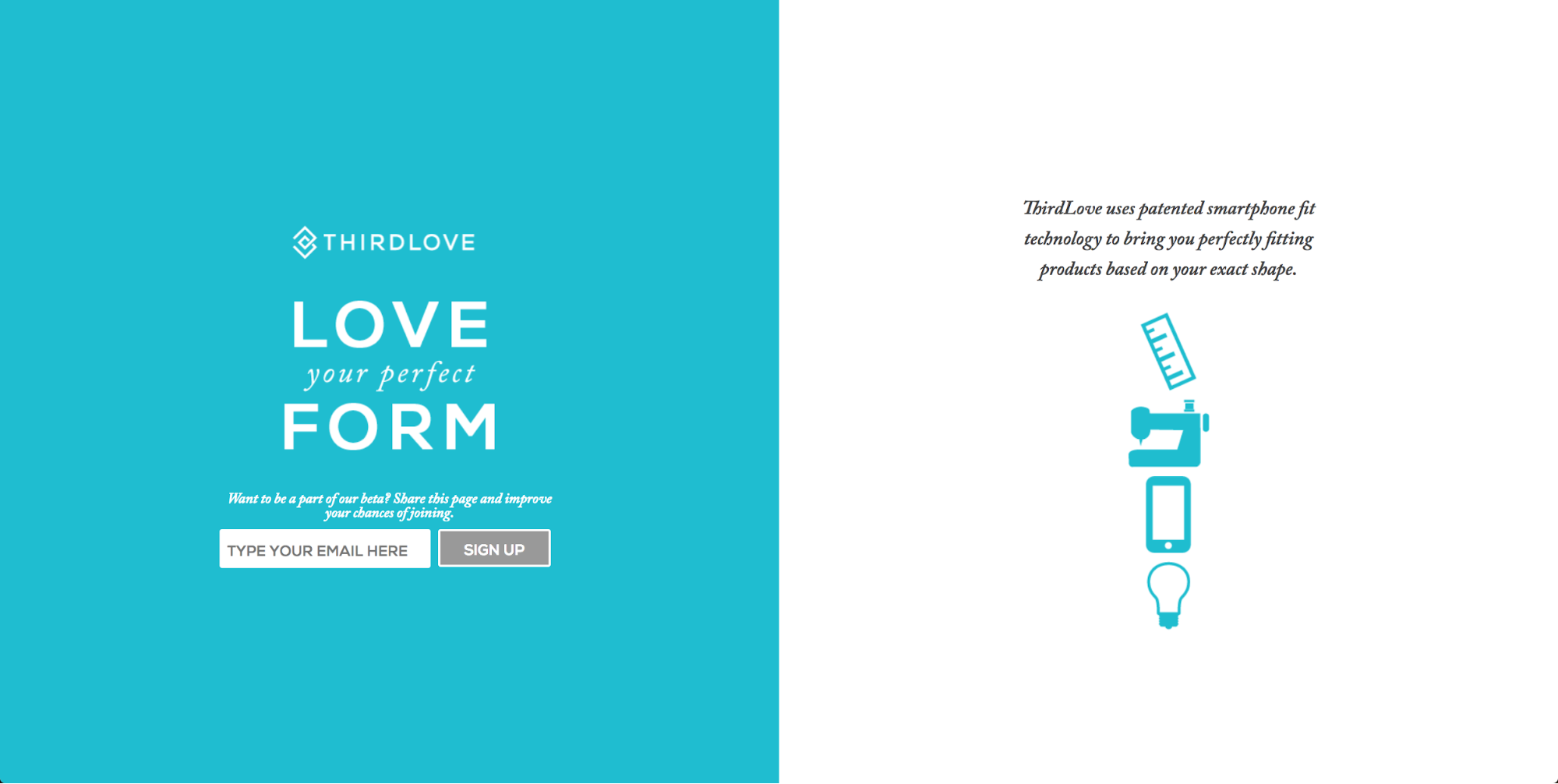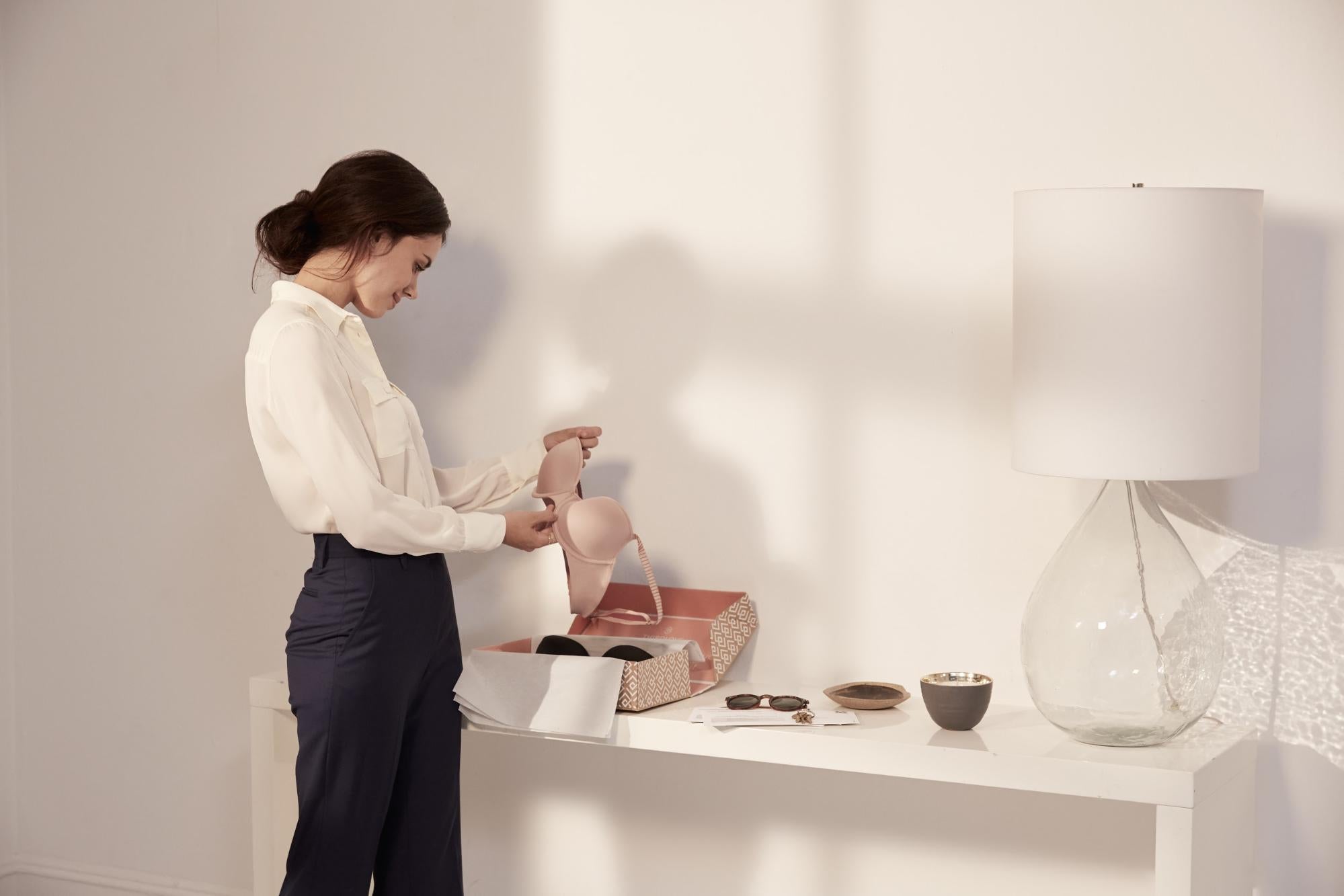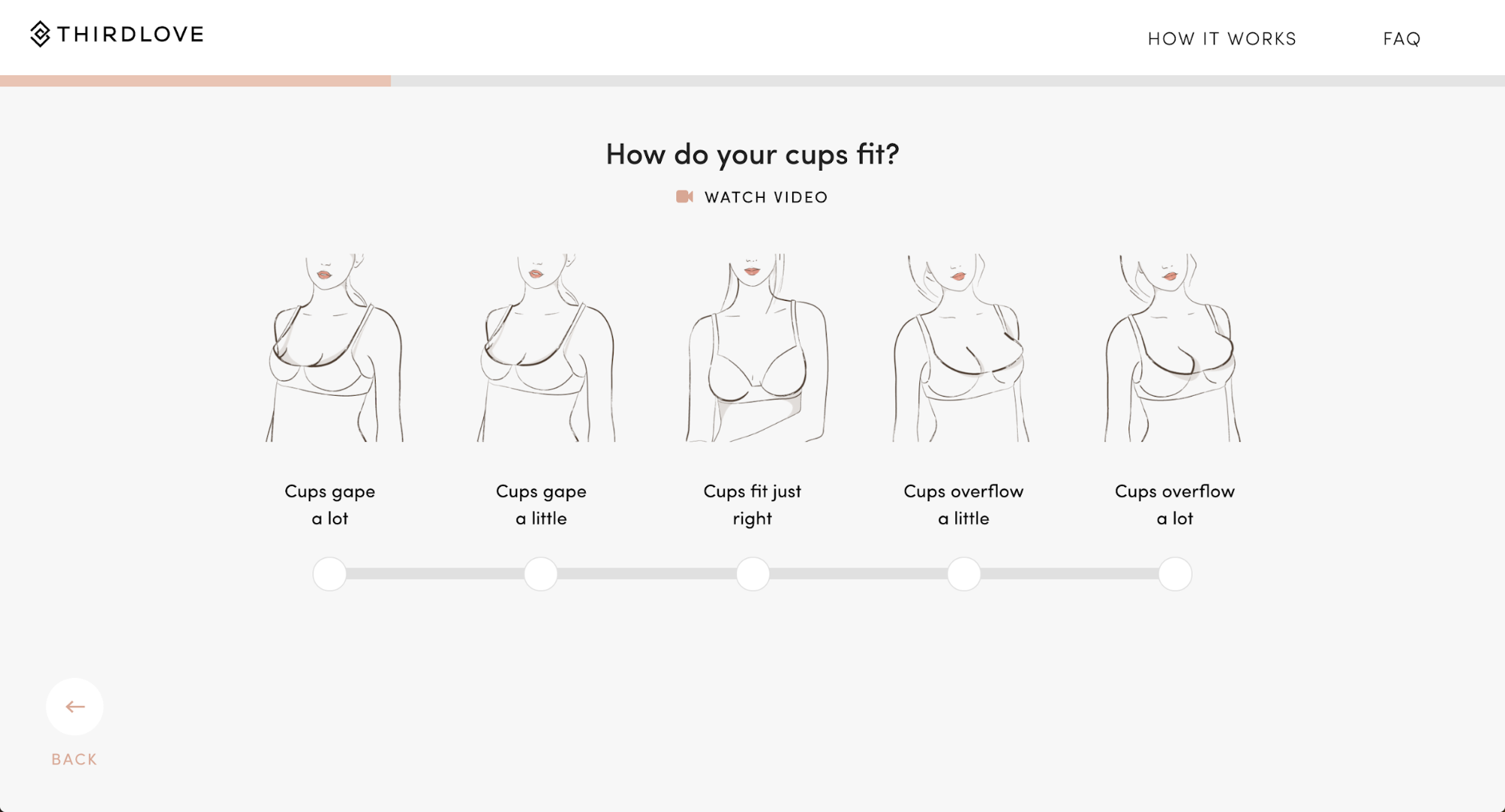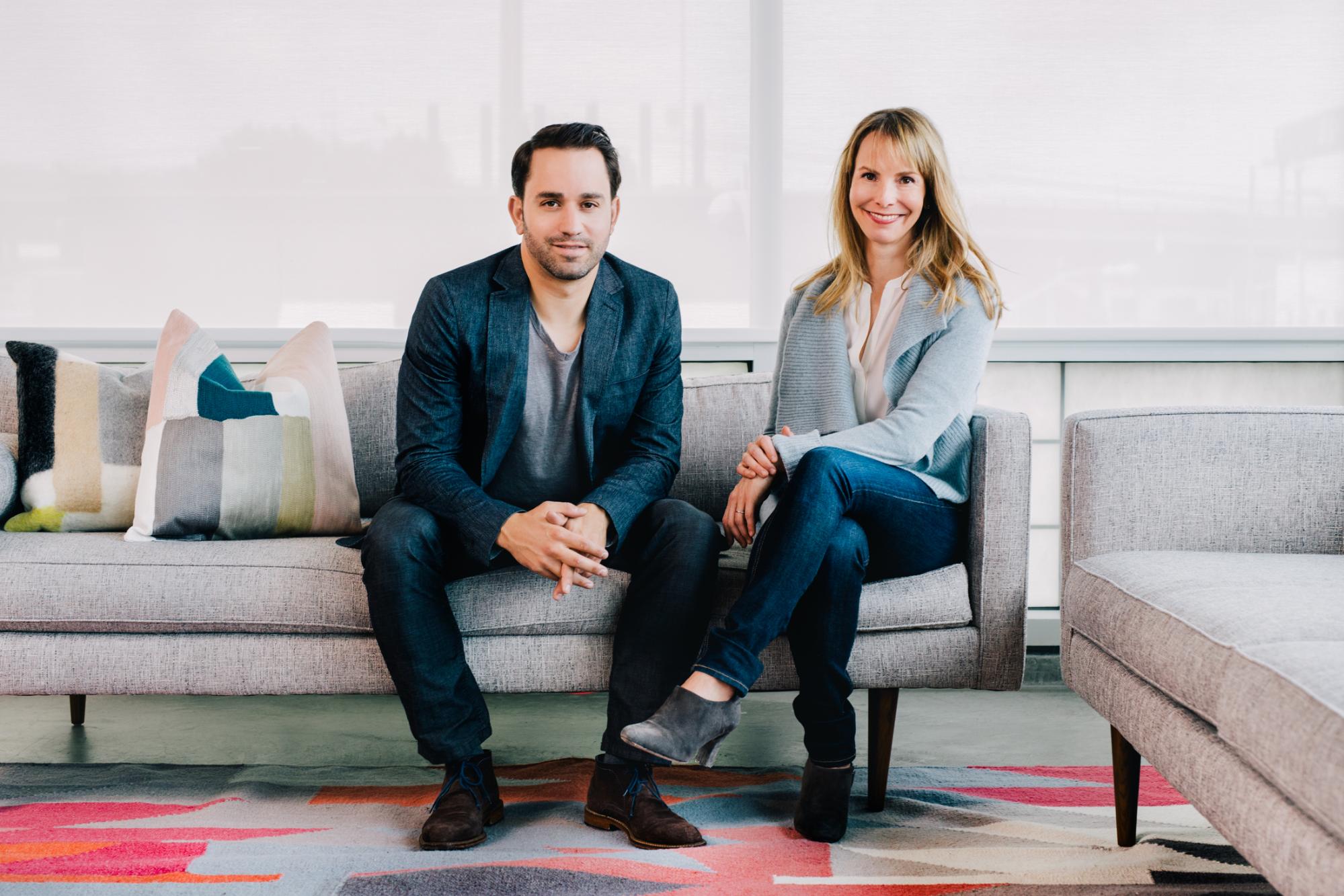- ThirdLove, one of Internet Retailer's most-profitable brands, revolutionized a $16B industry by amassing proprietary data
- But with the company's site always crashing, how could it continue crafting and selling the world's best bras at scale?
- “You lose confidence in your ability to deliver,” says co-founder Heidi Zak. “We needed a partner we knew would keep the site up and running.”
It was 2011, Thanksgiving, when two Americans arrived at the foot of Mount Everest. David Spector and Heidi Zak, husband and wife since 2009, were professional stars – he a partner at Sequoia Capital, she a senior manager at Google.
They could have been anywhere they wanted. But there they were, trudging slowly and deliberately up the greatest mountain on earth ...
Talking about ecommerce.
‘I Was Shocked That There Wasn’t a Company Doing This’
Zak had this idea, about bras. After all these years, she thought, why do they still not fit quite right? She suspected there were many other women who felt just like her.
As Everest’s snow-capped peaks grew closer, the couple talked bras, how they might sell them, how they might try to solve a decades-old headache facing billions of women across the world.
“This was one of those markets where, when I looked around, I was shocked that there wasn’t a company doing this,” Spector recalls. “I said, ‘Somebody has to do this. And it’s going to be us.’”
Unfortunately, solving that problem and giving customers a reliable platform to buy from proved to be two very different struggles.
Insights for today and tomorrow
Interested in a mountain-top view of ecommerce fashion? Then download The Fashion and Apparel Industry Report.
‘You lose confidence in your ability to deliver’
Officially, ThirdLove was born in 2012, when Zak left Google to co-found with Spector a brand to make bra shopping a more friendly place for women.
There were giants out there, that much was sure. But ThirdLove had a singular obsession that perhaps titans like Victoria’s Secret did not: fit.

Above all, sizing would set this company apart. ThirdLove found that 50% of women fell somewhere between bra sizes, so this, at the outset, was its breakthrough. The company invented half sizes, an idea that seems simple enough but was not then so widely available.
It began as a product offering. It has become a brand religion: find the best-fitting bra possible, whatever it takes.
“They gave us a choice between A or B,” ThirdLove’s website reads. “We chose C½.”
Spector and Zak would sell their bras exclusively online, first through an entirely self-built platform. They designed it, Spector says, “from scratch. In very Silicon Valley-like manner.” And it was, in his own words, an “extraordinary undertaking.”
The couple found it took an incredible amount of engineering resources to maintain ThirdLove’s own frontend and backend. Worse, during key selling moments, such as when the brand was featured on Good Morning America in 2013, the site crashed. There was no other way to interpret the letdowns.
ThirdLove couldn’t trust one of its most key pieces of infrastructure.
“If your site’s down, and you have massive amounts of traffic – I mean, it’s a terrible experience,” Zak says. “When it happens more than once, you just sort of lose confidence in your ability to deliver.
“It just got to the point,” she continued, “where we felt like we needed to rely on a partner who we knew would have 100% efficacy with keeping the site up and running.”

‘Thank God we made that change when we did’
ThirdLove partnered with Shopify in 2015.
It was a critical time for this company, which was growing into an ecommerce star with millions in sales. But for it to continue to scale, ThirdLove could not worry about whether its site was going to be there for it or not.
“I want to spend my dollars and our engineering hours with our team, working on new problems,” Spector says. A platform that could not deliver was no longer an option.
As it continued the evolution of its product line, ThirdLove discovered a partner capable to help it grow.
“It was not a good decision to (build our own platform),” says Zak. “We’re not just saying this because we’re Shopify customers, and nobody is paying us to say this. But truth be told, we give this advice to tons of other founders today. It’s like, ‘Don’t do what we did.’
The big thing,” she allows, “is thank God we made that change when we did. Because it really did allow us to focus on the things that matter and that differentiate us in the market.

Conversion Rates 3X Above Normal
ThirdLove knew well that it was a new name in an industry run by stodgy, traditional companies.
That cut two ways: ThirdLove could be nimble, aggressive, radical in its approach to attract new shoppers. But it also meant it had to think larger to bring in a customer base to begin with.
Zak was certain her company had a product that was different. She had for years been dissatisfied by the bra choices afforded her as a consumer, so Zak knew personally that ThirdLove would wow its customers ... if she could just get her bras in their hands.
In 2015, ThirdLove launched its Try Before You Buy campaign, where women could order bras and wear them, free of charge, for 30 days. If they kept it, agreeing that this was the most comfortable bra in their dresser drawer, only after a month would they be charged.
It was a radical idea then, when it was mostly food companies offering these same kind of guarantees. But ThirdLove found its connection with a segment of shoppers yearning for more.
The campaign was a hit. ThirdLove’s conversion rate through ads marketing its Try Before You Buy promotion was up to three times higher than its normal rate.
Some 750,000 women have since participated in Try Before You Buy since it launched, three years ago. On average, the retention rate for products ordered through the promo is a sky-high 70%.
Try Before You Buy, Zak says, “was a core part of getting our business off the ground.” And yet, even as it has reached massive scale, the company still boasts tremendous metrics.
During 2017, just two years after partnering with Shopify, ThirdLove posted:
- Revenue up 347% year-over-year
- Returning customer rate up 62% year-over-year



‘We will work harder. We will do more. We will not fail’
ThirdLove, which now also sells sleepwear and loungewear, is most notably a women’s outfitter.
But this is also a data company. Along the way, ThirdLove built Fit Finder, a proprietary data platform that allows it to store, sort, and execute a variety of functions from more than ten million women who have submitted their dimensions to the company.
As 2018 continues, its incredible dataset will allow ThirdLove to personalize its ecommerce experience at another level. Targeting, through email marketing, direct mail, and website strategy, should position the bra maker unlike any other in its space.
No one can replicate the data that we have,” Zak says. “Victoria’s Secret can’t. No other start-up can. There is no way they can do it.
ThirdLove has proven there is more to it than underwear. Those that know the industry best have joined – Lori Greely, former CEO of Victoria’s Secret, and Laurie Ann Goldman, former CEO of Spanx, were early investors – and the company’s lofty targets are clear.
“Bras and underwear is a $16 billion market in the U.S.,” says Zak. “And Victoria’s Secret owns half of it.”
You’d be wise not to bet against Spector and Zak from taking a chunk of that figure. More than five years after its founding, ThirdLove has made an old industry new again, with some 250 employees and more than 70 size offerings that make every woman the perfect customer.

At its heart, behind ThirdLove’s future, are two founders as competitive and hungry as any others in business – Spector the problem solver, Zak the woman always searching for more.
She was an only child who believed nothing was ever good enough. Straight As didn’t cut it. Nor did graduating with an economics degree from Duke, or an MBA from MIT. “I always felt like I had to do more,” she says.
Still fresh for Zak is the feeling, not long ago, when she had a product she loved but a customer base that had yet to respond.
“It is emotionally painful to keep refreshing your admin tool and see zero orders come through,” she says. “But at the same time, those are moments that you have two options as a founder. You can pack up and go home, and call it a day, and give up. Or you can figure something out.
“When Dave and I say we’re going to do something, we do something. We will work harder. We will do more. We will not fail.”
Read more
- How Chubbies is Conquering the Men’s Shorts Business on Shopify Plus
- Why Marshawn Lynch Chose Shopify Plus to Power His Flagship Store Two Days Before Retiring from the NFL
- How an Indian Retail Conglomerate Sells Across Global Online Marketplaces
- How This Lifeguard is Disrupting Women’s Athletic Swimwear
- How Leesa is Disrupting the Mattress Industry by Shipping Beds in Boxes & Making Richard Branson Proud
- How 2 Chainz Sold $2.1 Million of Ugly Santa Sweaters in 30 Days
- After Its Black Friday Sales Surge, Socks For Living Is Ready For Back to School
- Want to Get on Shark Tank? Shopify Plus Merchants Share How to Be Selected & Kill It Under Pressure
- How Two of the World’s Top Tattoo Artists Stuck a Needle in the Industry’s Secret Dark Side & Increased Abandoned Cart Recoveries 200%
- How Bohemia 4X’d Sales After Migrating & Supports the Survival of Artisan Crafts



